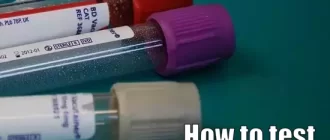Urine sample collection by catheterization is a widespread clinical practice. The following is a step-by-step protocol for medical practitioners to use while collecting urine from a patient who is using a Foley catheter.
1. Gather supplies:
Before you get started, make sure you have all the materials you’ll need. Nonsterile gloves, a 30- to 60-milliliter Luer-lock syringe for sterile specimens, alcohol wipes or scrubbers, two preprinted patient labels, a transparent biohazard bag for lab samples, a 10-milliliter syringe, and a graduated cylinder for collecting urine will be required.
2. Check the room:
Verify that the patient is in a safe setting by taking all necessary precautions to prevent the spread of infection. If you discover any threats, it is your responsibility to eliminate them or report them to the right authority.
3. Introduce yourself and confirm the patient ID:
Talk to the patient about who you are and what you do. Before initiating the process, double check the patient’s identification using at least two identifiers (such as their name and date of birth).
4. Explain the process to the patient:
Use active listening and pertinent inquiry to explain the procedure to the patient. Pay close attention to the patient’s cues and keep the patient’s comfort, privacy, and respect in mind at all times.
5. Verify the Order and Assemble Supplies:
Check the order and set up the materials on a table covered with a protective drape. Everything you need to transfer biohazardous materials to the lab is included: gloves, a Luer-lock syringe, alcohol swabs, a sterile container, two patient labels, and a transparent biohazard bag.
6. Perform hand hygiene and put on gloves.
Don non-sterile gloves and wash your hands before you begin.
7. Check for urine in the tubing:
Urine testing and tube placement on the bed should be done. If more pee is required, the tube leading to the port can be clamped for 10 to 15 minutes.
8. Clean the sample port of the catheter:
A cotton swab and alcohol are used to clean the catheter’s sample port.
9. Withdraw urine with the Luer-Lock syringe:
Remove 10–30 mL of urine by connecting the Luer-lock syringe to the catheter’s sample port. Take out the syringe and release the tube’s clamp.
10. Transfer urine to a sterile container.
Invert the lid of the sterile container onto the drape and remove the lid. Urine should be transferred to the sterile container without the syringe coming into contact with it.
11. Place labels on the specimen container and biohazard bag:
After wiping off the exterior of the container with disinfectant wipes, place the syringe on the drape and shut the lid securely. Take off your gloves and wash your hands. The date, time, and your initials should be added to the preprinted label. Wrap the specimen in the biohazard bag and label the container. When you’ve washed your hands and positioned the second label outside the bag, you may put on the gloves again.
12. Transport the patient to the lab and assist the patient:
Urine should be delivered to the lab for testing. Help the patient settle into a relaxed position, solicit feedback, and express appreciation for their time.
13. Ensure Safety Measures:
Before exiting the room, make sure it is secure. The room should be free of any potential trip hazards, so make sure the bed is low and secured. Report any concerns and keep a record of the procedure and any assessments performed.
Collecting a urine sample by catheter is a standard nursing procedure. Medical personnel can consistently and safely collect urine from a patient using a Foley catheter by following these instructions.
About the Author
Reyus Mammadli is the author of this health blog since 2008. With a background in medical and biotechnical devices, he has over 15 years of experience working with medical literature and expert guidelines from WHO, CDC, Mayo Clinic, and others. His goal is to present clear, accurate health information for everyday readers — not as a substitute for medical advice.







